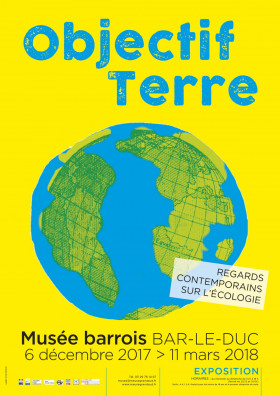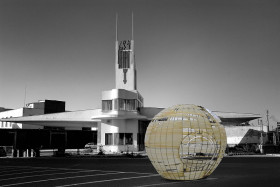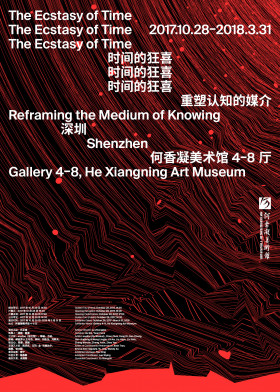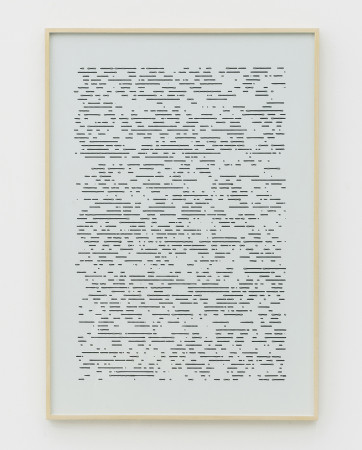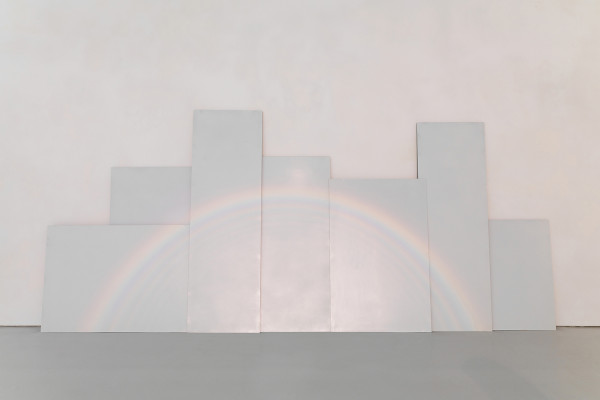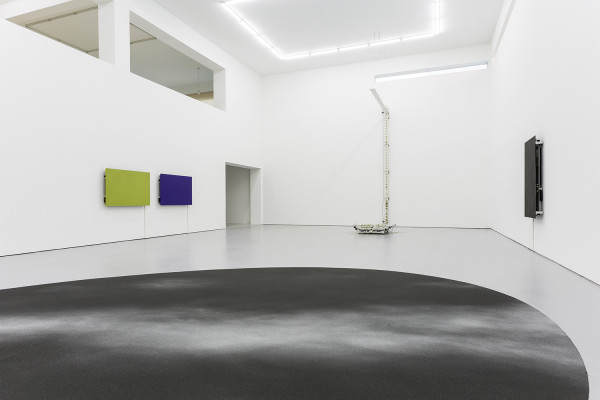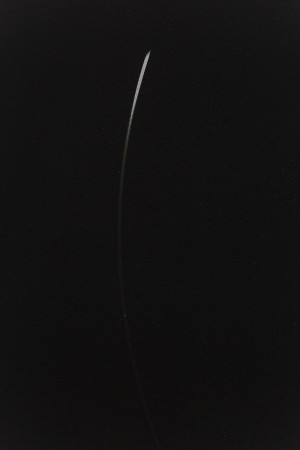Exposition proposée par le Musée Barrois. Regards contemporains sur l’écologie. À travers des œuvres issues de collections publiques et privées, le Musée barrois rend compte d’une création contemporaine autour de ce sujet d’actualité.
Les artistes ont toujours porté un regard aigu sur leur temps, prenant le pouls de la société et de son évolution. Aujourd’hui, la question de l’environnement est au cœur de toutes les préoccupations. Comment l’écologie est-elle prise en compte par les artistes contemporains ? Quel constat font-ils de ce monde qui change et quelle vision offrent-ils pour l’avenir ? Vernissage le mardi 5 décembre à 18h30.
actualités & blog
Objectif Terre
Abattre les Murs, Régionale 18
Le titre de l’exposition de la Regionale, cette année au Kunst Raum Riehen, a une consonance politique. Il ne se réfère pas seulement aux motivations qui ont conduit à créer la Regionale en tant qu’exposition d’art tri-nationale dans un espace transfrontalier, mais aussi aux nationalismes proliférant mondialement, aux murs menaçants, au cloisonnement, à l’isolation. Avec des oeuvres d’artistes des trois pays, l’exposition à Riehen s’entend comme un signal contre cela et fait la promotion de l’exposition la plus largement suivie de l’année. Des interprétations peintes ou abstraites et des
appropriations artistiques, des collages à effet dadaïste, de l’art de matériaux et objets, des maquettes évoquant l’histoire architecturale,
coloniale et littéraire, des images en mouvement, des identifications sculpturales du Moi, marquent l’exposition.
Der politisch angehaucht klingende Titel der diesjährigen Regionale Ausstellung im Kunst Raum Riehen bezieht sich nicht nur auf die Beweggründe zur Entstehung der Regionale als eine trinationale Kunstausstellung in einem grenzüberschreitenden Raum, sondern auch auf heutige, weltweit wuchernde Nationalismen, drohende Mauern, Abschottung und Isolation. Mit Werken von daran beteiligten Künstlerinnen und Künstler aus allen drei Ländern der Regio versteht sich die Ausstellung in Riehen als ein Gegenzeichen dafür und wirbt für die am stärksten beachtete Ausstellung des Jahres. Abstrakte malerische Interpretationen und Kunst Aneignungen, dadaistisch anmutende Collagen, Material- und Objektkunst, modellhafte Anspielungen auf Architektur-, Kolonial- und Literaturgeschichte, Bewegtbilder, skulpturale Identifikationen des Ichs prägen dabei die Ausstellung.
Entre deux infinis
Galerie Anne-Sarah Bénichou
Vernissage samedi 28 octobre de 15h à 20h
Entre deux infinis
Michel Blazy, Julien Discrit, Pierre Huyghe, Claude Lévêque, Laurent Montaron, Valérie Mréjen, Melik Ohanian, Thu-Van Tran, Jingfang Hao et Lingjie Wang
exposition collective du 28 octobre au 21 décembre 2017
Second volet d’une réflexion thématique autour de la représentation des notions conceptuelles dans l’art contemporain, l’exposition collective « Entre deux infinis » interroge le Temps au travers des œuvres de dix artistes : Michel Blazy, Julien Discrit, Pierre Huyghe, Claude Lévêque, Laurent Montaron, Valérie Mréjen, Melik Ohanian, Thu Van Tran et le duo Jingfang Hao et Lingjie Wang.
« C’est là que parfois le temps s’assoupit comme la roue du compteur quand la dernière ampoule s’éteint. C’est là qu’on commence à voir, dans le noir. Dans le noir qui est aube et midi et soir et nuit d’un ciel vide, d’une terre fixe. Dans le noir qui éclaire l’esprit. C’est là que le peintre peut tranquillement cligner de l’oeil. » Samuel Beckett, Le Monde et le pantalon.
http://annesarahbenichou.com/fr/expositions/presentation/20/entre-deux-infinis
时间的狂喜 / L’extase du temps
He Xiangning Art Museum has always been concerned with the condition of young artists’ practice. It is with great honor that we invite Guangzhou Academy of Art professor Hu Bin and independent curator Yuan Fuca to co-curate an exhibition titled “The Ecstasy of Time: Reframing the Medium of Knowing.” The exhibition features eleven individuals and collectives of young Chinese artists and commisions a performance installation “Prosecuting Sweat, Neon Dreams” in accordance with the theme.
The works presented in this exhibition respond to different aspects of the complex relationship between “technology and art.” Using the context of postmodern language on the questions of technology and representation, Fredric Jameson once proposed that art today is re-productive art, while at the same time suggesting that the representation machines of late capitalism presents a challenge to our aesthetics. How is the world recreated by technology? How does this recreated world reconstruct our methods of viewing and thinking? Correspondingly, when the judgement criteria of modernism are no longer applicable to today’s media environment, how does one read the fragmented information contained in the works in light of the smooth content of the interface of production? In reality, with the gradual reduction of life itself to a commercialized image of imitation and replication, the elimination of the historic significance of incidents, as well as the reality of the audience’s pursuit of the pleasure of pure language, how can we reflect on the changes rising from the transformation of science and technology?
Here, the reintroduction of the concept of time possesses a certain political necessity. Correspondingly, the material and sense forms of time receive interests in this exhibition. Within time, man is no longer the starting point for the news, but has become at various times the recipient, indicator, code, and medium supporting the news, and sometimes the news itself. This view of time redefines human plasticity—a sort of mechanism for establishing communication and discernment, a moment in time that includes the past, present and future, much like the concept of “ecstasy” described by Martin Heidegger, which is therefore a material manifestation of the “authentic present.” In this everaccelerating space-time relationship that promotes globalization, how do we understand the resistance of the form of time? Considering especially the speed of society above all else in China’s postmodern reality, how do we think deeply about the problems created by technology to establish individual judgment and resistance? We hope for “The Ecstasy of Time” to serve as a critical starting point.
Revue de l’exposition, Artforum
郝经芳&王令杰
2017.07.02
— 文/ 李博文
艺术家郝经芳与王令杰在北京空白空间的首个展览集结了这对艺术家组合近年创作的作品,这些作品以相对直接的科技手段处理自然界的元素——光、水、沙、树叶,甚至是彩虹。众多作品间并不构成一个紧密、宏大的叙事,相反地,展览有着一种明确的综合特性,亦存在一种让人愉悦的互动感:《一滴水》(2017)不断生成水珠,这些水珠像柔软的玻璃球一样顺绒布流下,散落四周;《吱呀》(2016)在意识到观众的存在之后便会启动,覆满黄沙的黑胶唱片机开始吱吱呀呀地歌唱;《在一个万物运动的宇宙中》系列墙面装置通过激光以一种催眠式的稳定动率不断在涂有热敏颜料的亚克力板上画圈;展览中最大型的作品《Falling and Revolving》(2017)则在撒下树叶的同时将这些树叶重新收集起来,不断以此往复。展览因此看起来如某种自然博物馆的设置,以一种创造性的、人工的方式输出关于非人工环境的知识。
众多作品的科技手段是老旧的,或者说“古早”;在这个意义上,艺术家组合的实践是建立在某种“科技考古”的基础之上的。亚当·希姆奇克(Adam Szymczyk)在最近的一次访谈中曾提到第十四届文献展策展团队对于“科技发展的’古代’——也就是1970年代——非常感兴趣”,而郝经芳与王令杰似乎也有类似的兴趣:缓慢运动的履带、慢速旋转的黑胶唱盘、几乎没有流动性(取而代之的是“滚动性”)的水、通过费时费事的扬撒行为创作出来的巨大地面作品(《星空》,2017),甚至是热敏纸这种有着特殊“古科技”浪漫气息的材料本身(这种材料恰是在1970年代左右投入使用的)。尽管展览中体量不一的作品很好地瓜分了两个展厅的空间,但在时间层面上,大部分作品都保有一种平均的、让人无可奈何的慢速。这种速度打消了近年来受“迪士尼乐园化”冲击的当代艺术观众的热情(但是“迪士尼乐园式”展览和“自然博物馆式”展览的关系究竟为何呢?),但也积极地鼓励观者重新想象科学与技术的关系。如果我们必须要用一句话来概括展览主题的话,这可能就是“对熵的关注”:一半的作品似乎在假设一种没有熵,抑或没有单向衰败、不朝向混乱发展的宇宙,另一半的作品则似乎坦然面对这些可能的动荡场景。在这个意义上,众多作品精细、脆弱的技术特性也变成了一个更复杂的问题,而不仅是“哎呀坏了赶快修一下”就能解决的情形。
Revue de l’exposition, ArtAsiaPacific
JINGFANG HAO & LINGJIE WANG
by CHELSEA LIU
French-based artist duo Jingfang Hao and Lingjie Wang’s first solo exhibition at White Space Beijing transformed the gallery space into a quiet amusement park filled with studies and experiments on machinery, technology, material and natural phenomena. Here, installations of droplets of water and falling leaves, and drawings of the daily movement of the sun in the sky formed an eternally looping display that constructed an immortal man-made world. Each installation represented the subtly moving trajectory of a different, essential—yet imperceptible—wild element.
In one of the two exhibition halls, 28 works from the series “Sun Drawing” (2014–17) was mounted in a horizontal line on a wall. The circular, flat works on paper were reminiscent of traditional Chinese paintings on silk. These prints were produced by an artist-made instrument that used optical devices and thermal paper, and trace the sun’s daily path. Standing in front of the works—each one featuring a variation of a semi-circle seared onto the paper —viewers were able to imagine the temperature and light exposure on the day it was recorded. In recording long, short and intermittent rays, or the lack of visibility altogether, the duo has allowed the sun—a presence both familiar and distant to us—to “write” its own diary, creating a visual effect that is monotonous yet calming—a kind of metaphorical graffiti revealing subtle variations in day-to-day emotions. This work is evocative of On Kawara’s “Today” paintings, which marks the expansive and endless flow of time through sets of austere, monochromatic numbers depicting the dates on which they were made. Similarly, the duo highlights the simple, eternal symbol of the fleeting nature of time and the inevitability of its disappearance.
On an opposite wall to “Sun Drawing,” several aluminum panels were installed, upon which a glass microsphere was pasted. An LED light overhead caused a rainbow spectrum of color to appear in a flawless arch across these metal boards. This was the result of countless optical experiments, where the artists had found the optimum equipment and conditions for reproducing an artificial rainbow. The intangible, ephemeral visual phenomenon, which can usually only be captured by taking a photograph, is transformed into a stable, constant “object” that can be observed for a relatively long period of time in the exhibition space. Additionally, the artists have concentrated the magnificent image—which typically stretches into infinity in the sky—into just a dozen square meters, allowing the viewer to encounter it in a mundane, small-scale context. Both the obsessive drawings of the sunrays and the recreation of the rare spectrum effect brought to the fore grand questions about cosmic matter, in which the inescapability of the dissipation of time and the inability to capture the idea of space makes us realize how tiny and powerless we are. Scenes of natural beauty tend to appear randomly and disappear quickly after, yet here the artists have manipulated variables to create these moments again and again, creating poetic and endless landscapes.
The artists’ starting point or inspiration has always been rooted in a curiosity toward conceptual imagery or an illustration of the motion of matter. Via careful physical and technical studies on materials, they build up appropriate environments to incubate dazzling scenes. Moved by discussions on the meaning of animal and human life in the The Human Condition (1958), penned by political theorist Hannah Arendt, the artists developed the series “In a Universe Where Everything Moves at All” (2015), which was hung in the other hall in the space. The duo used thermal paint to produce a seemingly enormous coal-black background, and then programmed a laser point to move like a comet across the surface, leaving behind a gradually disappearing trail of light. Viewers might have missed the tiny white-hot point altogether until they stood adjacent to the work. The imperceptible dot moved extremely slowly across the black abyss, as if it were a lonely but persevering individual traveling through the immense universe.
These installations were unique not simply because of the diversity of their materials, but how the artists modestly dealt with them. Their work enhances our perception of the elements around us, reminding us of the infinity of the vast universe and allowing us to calmly revisit our place within it.
http://artasiapacific.com/Magazine/WebExclusives/JingfangHaoAndLingjieWang
 En
En 中文
中文